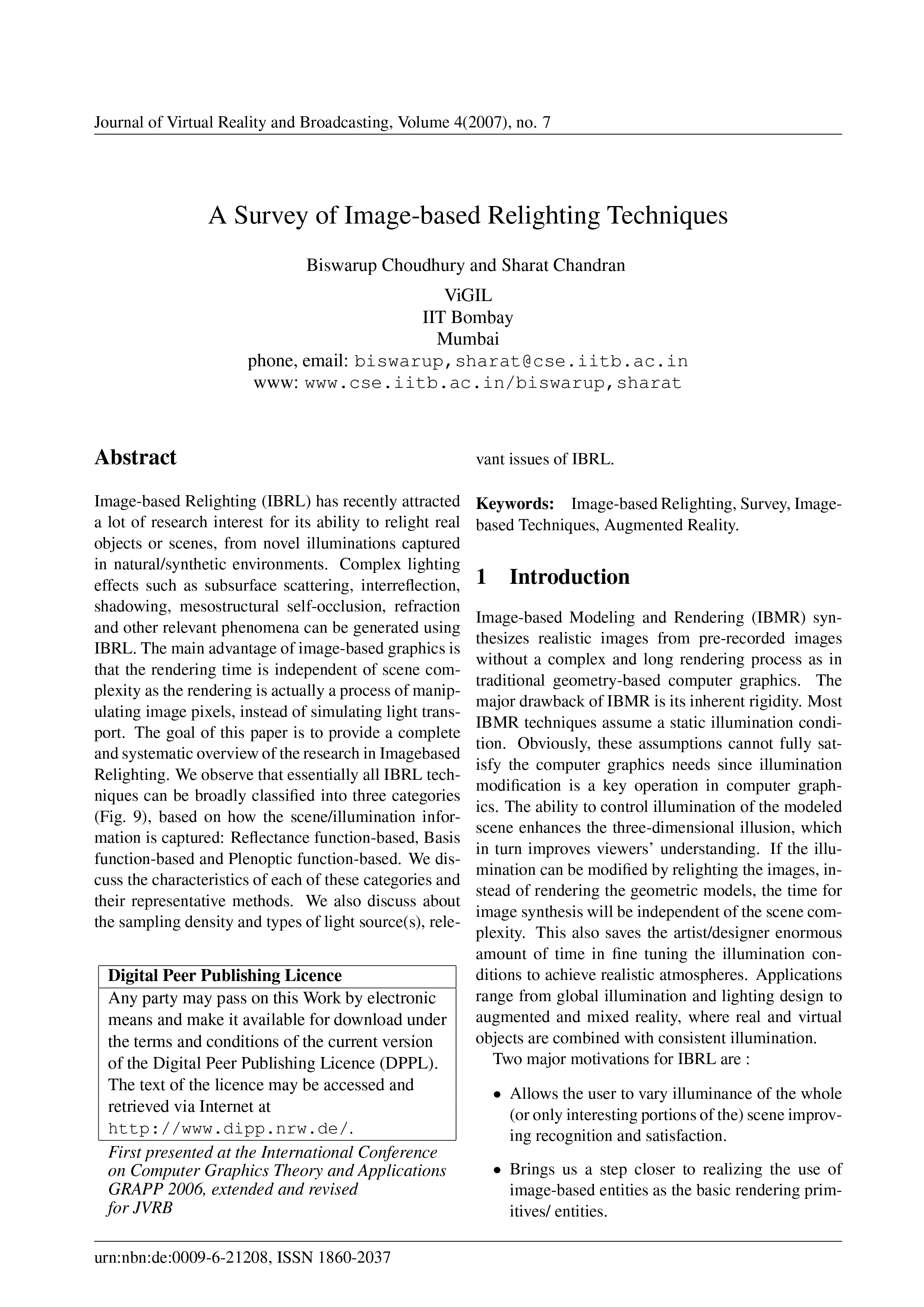A Survey of Image-based Relighting Techniques
DOI:
https://doi.org/10.20385/1860-2037/4.2007.7Keywords:
Augmented Reality, Image-based Relighting, Image-based Techniques, SurveyAbstract
Image-based Relighting (IBRL) has recently attracted a lot of research interest for its ability to relight real objects or scenes, from novel illuminations captured in natural/synthetic environments. Complex lighting effects such as subsurface scattering, interreflection, shadowing, mesostructural self-occlusion, refraction and other relevant phenomena can be generated using IBRL. The main advantage of image-based graphics is that the rendering time is independent of scene complexity as the rendering is actually a process of manipulating image pixels, instead of simulating light transport. The goal of this paper is to provide a complete and systematic overview of the research in Imagebased Relighting. We observe that essentially all IBRL techniques can be broadly classified into three categories (Fig. 9), based on how the scene/illumination information is captured: Reflectance function-based, Basis function-based and Plenoptic function-based. We discuss the characteristics of each of these categories and their representative methods. We also discuss about the sampling density and types of light source(s), relevant issues of IBRL.
Published
2009-11-12
Issue
Section
GRAPP 2006





